Chamisso, A. de and C. G. Eysenhardt
De animalibus quibusdam e classe vermium Linneana, in circumnavigatione terrae auspicante Comite N. Romanzoff, duce Ottone de Kotzebue, annis 1815-1818 peracta observatis. Fasciculus secundus, reliquos vermes continens. Cum tabulis XI aeneis pictis.
Berlin, [F. Dümmler], 1821. 4to (26.1 x 20.5 cm). Title page, 30 pp. [numbered: (345)-374]; finely engraved and ten originally hand-coloured plates [numbered XXIV-XXXIII]. 20th century blue buckram with gilt title on the spine.
Very rare scientific work written and faithfully illustrated by the renowned German naturalist and poet of French descent, Louis Charles Adélaïde de Chamissot de Boncourt, known as Adelbert von Chamisso (1781-1838). In 1813, he wrote the prose narrative Peter Schlemihl, the man who sold his shadow to the devil, only to find that a man without a shadow is shunned by human societies. This world-famous story popularized the Yiddish word schlemiel for a hopelessly incompetent person, a bungler (Wikipedia). Interestingly, Peter Schlemihl seeks refuge in nature and travels around the world in scientific exploration, and two years later, in 1815, Chamisso himself was appointed botanist to the Russian ship Rurik, fitted out at the expense of Count Nikolay Rumyantsev, which Otto von Kotzebue commanded on a scientific voyage round the world. He collected at the Cape of Good Hope in January 1818. His diary of the expedition ( Tagebuch, 1821) is a fascinating account of the expedition to the Pacific Ocean and the Bering Sea. During this trip Chamisso described a number of new species found in what is now the San Francisco Bay Area. Several of these, including the California poppy, Eschscholzia californica, were named after his friend Johann Friedrich von Eschscholtz, the Rurik's entomologist. In return, Eschscholtz named a variety of plants, including the genus Camissonia, after Chamisso. On his return in 1818 he was made custodian of the botanical gardens in Berlin and was elected a member of the Academy of Sciences" (Wikipedia). Second aurhor, Karl Wilhelm Eysenhardt (1794-1825). On the title page it is stated that there should be 11 plates; this, however, is an error. The plate descriptions refer only to the ten plates included here. The binding is protective rather than elegant. Rear, blind wrapper bound in. Provenance: on the front free endpaper recto a stamp of the American malacologist Richard Irwin Johnson (1925-2020). Plates lightly, evenly toned; text leaves spotted, although most leaves only in the margins. Cat. BM(NH) p. 335; Nissen ZBI, 862.
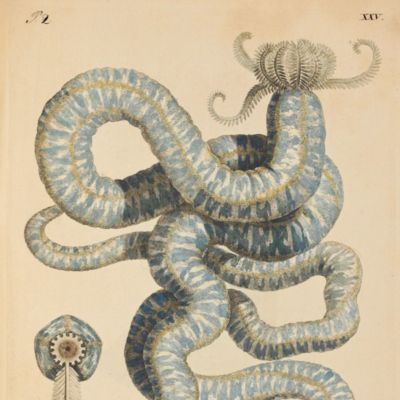

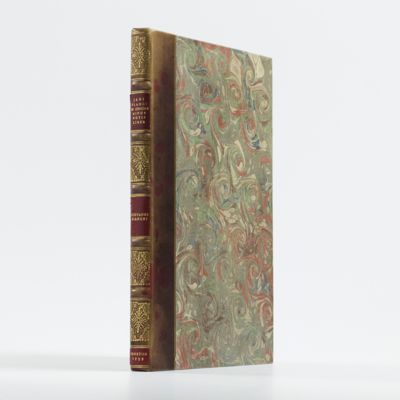
![image for Ophiures recueillis par l'Investigator dans l'Océan Indien. I. Les ophiures de mer profondes [AND] Ophiures recueillis par l'Investigator dans l'Océan Indien II. Les ophiures littorales.](https://schierenberg.nl/media/cache/product_thumb/60990/60990_x.jpg)
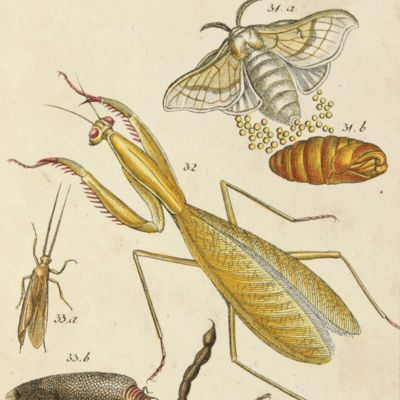
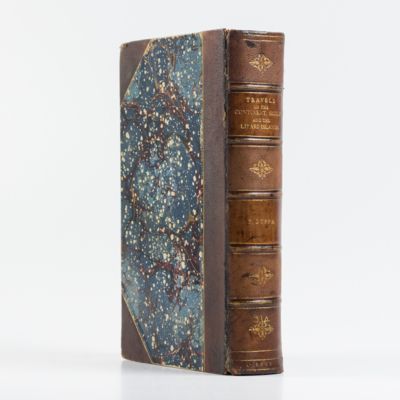
![image for The salmon rivers of Ireland. Volumes I-II. [Complete].](https://schierenberg.nl/media/cache/product_thumb/65554/65554_x.jpg)
![image for The Norwegian forms of <em>Lithothamnion</em> [AND] New or critical Lithothamnia.](https://schierenberg.nl/media/cache/product_thumb/29446/29446.jpg)

![image for Fauna und Flora des Golfes von Neapel und der angrenzenden Meeres-Abschnitte herausgegeben von de zoologischen Station zu Neapel. 33. Monographie: Stomatopoden. Erster Theil. [All published].](https://schierenberg.nl/media/cache/product_thumb/71905/71905_x.jpg)
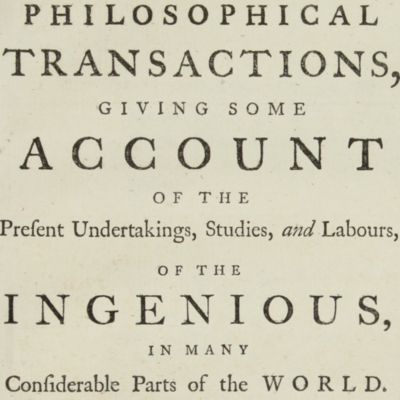
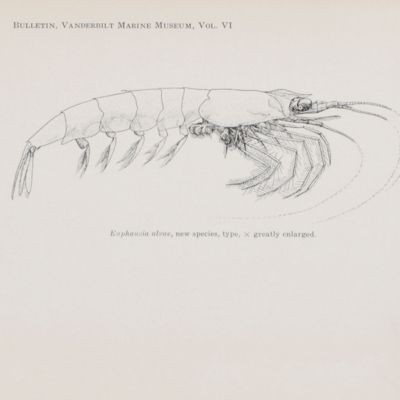
![image for Mémoire sur les Granits de France, Comparés a Ceux d'Égypte. [AND] Mémoire sur Quelques Corps Fossiles Peu Connus. In: Histoire de l'Academie Royale des sciences, Année MDCCLI [1751], avec les mémoires de mathématique & de physique, pour la même année. Tirés des registres de cette académie.](https://schierenberg.nl/media/cache/product_thumb/60937/60937_x.jpg)
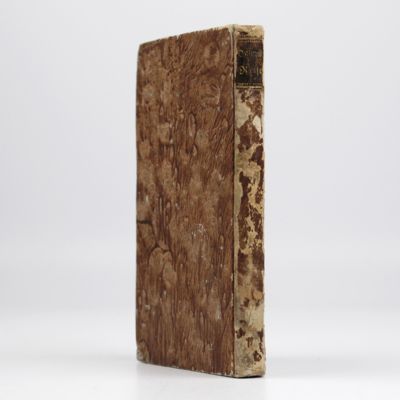
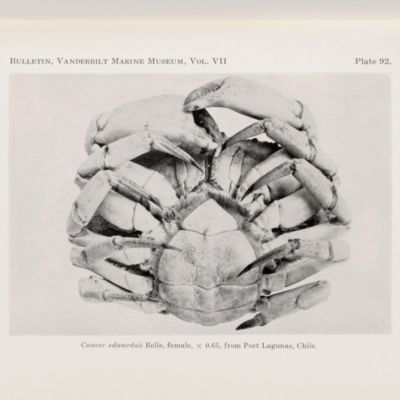
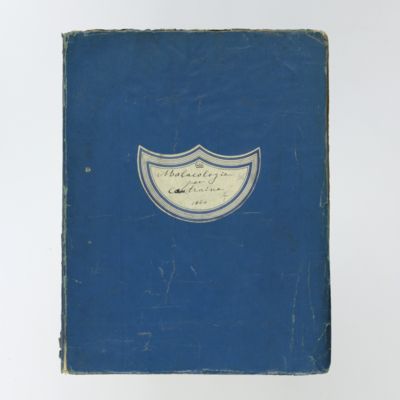
![image for Voyage dans l'Amérique méridionale (le Brésil, la république orientale de l'Uruguay, la république Argentine, la Patagonie, la république du Chili, la république de Bolivia, la république du Perou). Exécuté dans le cours des années 1826, 1827, 1828, 1829, 1830, 1831, 1832 et 1833. Mammifères. Plates 21, 22, 25. [Dolphins]](https://schierenberg.nl/media/cache/product_thumb/69771/69771_x.jpg)
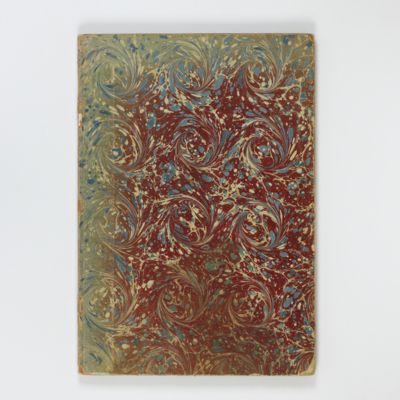
![image for Beschrijving van een nieuwen zoetwater-visch van Borneo, <em>Osteoglossum formosum</em>. [AND] Beschrijving van vier oost-Indische zeevisschen behoorende tot het geslacht <em>Amphacanthus</em>. [AND] Overzigt der uit de Sunda- en Moluksche zeeën bekende visschen van de geslachten <em>Amphiprion, Premnas, Pomacentrus, Clyphisodon, Dascyllus</em> en <em>Heliases</em>.](https://schierenberg.nl/media/cache/product_thumb/70391/70391_x.jpg)
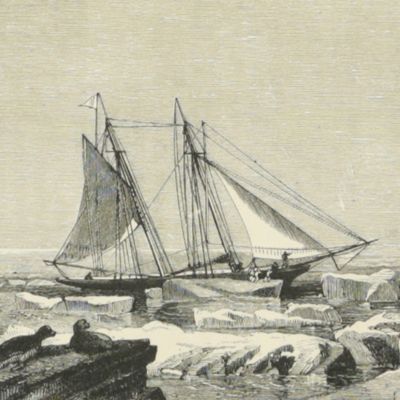
![image for Natuurlijke en naar het leven nauwkeurig gekleurde afbeeldingen en beschrijvingen der spoken, wandelende bladen, zabel-springhanen, krekels, trek-springhanen en kakkerlakken in alle vier deelen der wereld, Europa, Asia, Afrika en Amerika huishoudende. Representation exactement colorée d'après nature des spectres ou phasmes, des mantes, des sauterelles, des grillons, des criquets et des blattes. Qui se trouve dans les quatre parties du monde. L'Europe, l'Asie, l'Afrique et l'Amérique. [1e - 4e geslacht].](https://schierenberg.nl/media/cache/product_thumb/77367/77367_x.jpg)
![image for Insects [from the Encyclopédie ou Dictionnaire des sciences, plates 75-83].](https://schierenberg.nl/media/cache/product_thumb/72397/72397_x.jpg)
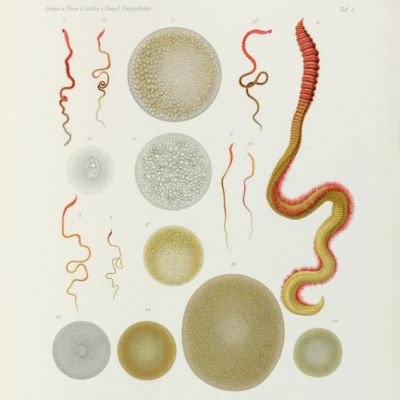
![image for Ocean and river gardens: a history of the marine and fresh-water aquaria, with the best methods for their establishment and preservation. With twenty coloured plates from life. Part I. Ocean gardens. Part II. River gardens. [Complete].](https://schierenberg.nl/media/cache/product_thumb/70578/70578_x.jpg)

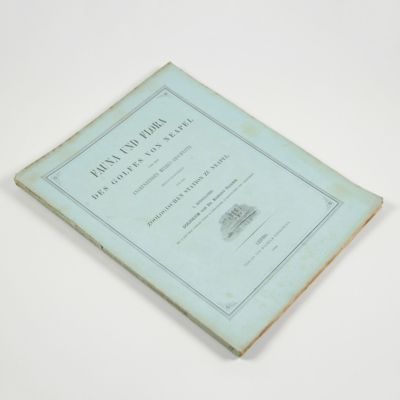
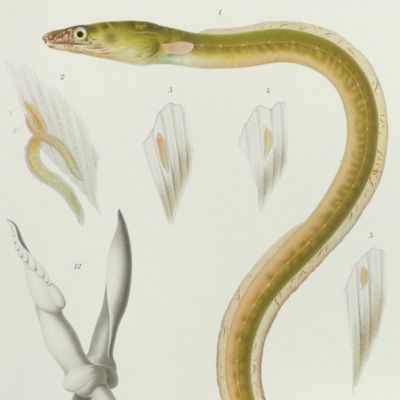
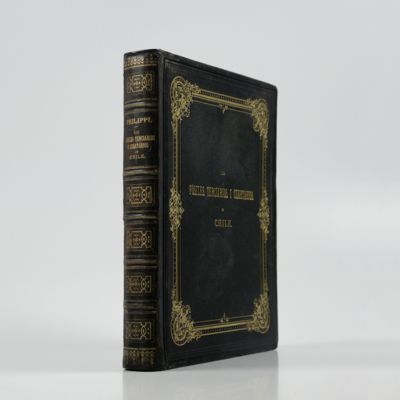
![image for Traité de Paléontologie où histoire naturelle des animaux fossiles considérés dans leurs rapports zoologiques et géologiques. [Text and atlas, complete].](https://schierenberg.nl/media/cache/product_thumb/74907/74907_x.jpg)
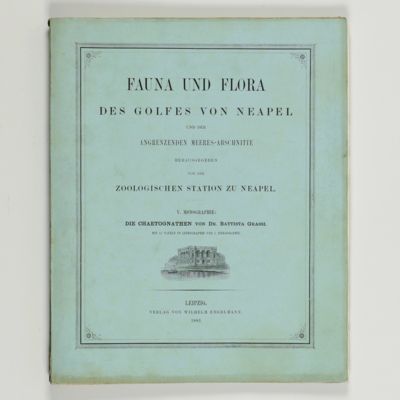
![image for The causes of fluctuations in turgescence in the motor organs of leaves. [AND] A new and parasitic species of <em>Choanephora</em>.](https://schierenberg.nl/media/cache/product_thumb/71203/71203_x.jpg)
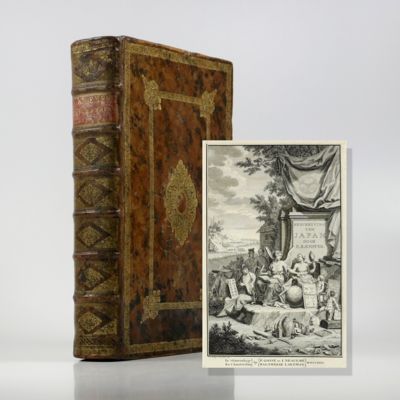
![image for Les mollusques marins testacés du Maroc. Catalogue non critique. I. Les gastéropodes. [AND] II. Les lamellibranches et les scaphopodes. [AND] Premier supplement.](https://schierenberg.nl/media/cache/product_thumb/74966/74966_x.jpg)
![image for [Original orchid drawings and descriptions]](https://schierenberg.nl/media/cache/product_thumb/64832/64832.jpg)
![image for Miscellanea Silurica I-III. I. Über die Russischen Silurischen Leperditien mit Hinzuziehung einiger Arten aus den Nachbarländern (Baltikum); II. Über einige neue Baltisch-Silurische Petrefacten; III. I. Nachtrag zur Monographie der Russischen Silurischen Leperditien [AND] II. Die Crustaceenfauna der Eurypterenschichten von Rootziküll auf Oesel.](https://schierenberg.nl/media/cache/product_thumb/19368/19368_x.jpg)
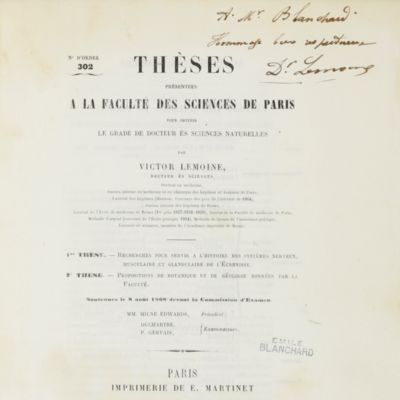
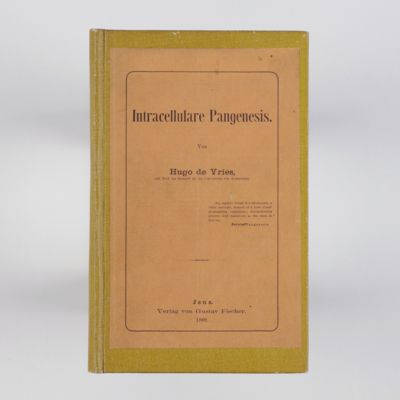

![image for <em>Euphorbia peplus [from the Herbier de la France]</em>](https://schierenberg.nl/media/cache/product_thumb/70131/70131_x.jpg)
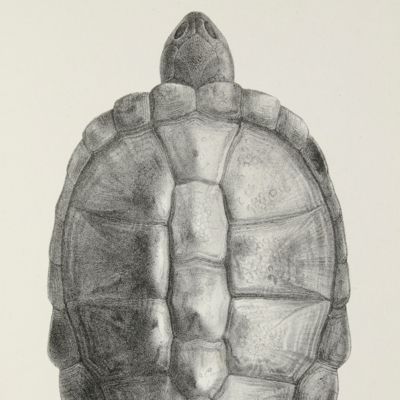
![image for Histoire générale des voyages, ou nouvelle collection des toutes les relations de voyages par mer et par terre, qui ont été publiées jusq'à présent dans les différentes langues de toutes les nations connus: ... Tome dix-septième. Histoire générale des voyages, depuis le commencement du XVme siècle, dix-septième partie. Livre septième. Vies des gouverneurs généraux, avec l'abregé de l'histoire des etablissemens Hollandois aux Indes Orientales [AND] Histoire naturelle des Indes Orientales.](https://schierenberg.nl/media/cache/product_thumb/62296/62296.jpg)
![image for Genera insectorum Linnaei et Fabricii iconibus illustrata. [Plates].](https://schierenberg.nl/media/cache/product_thumb/77060/77060_x.jpg)
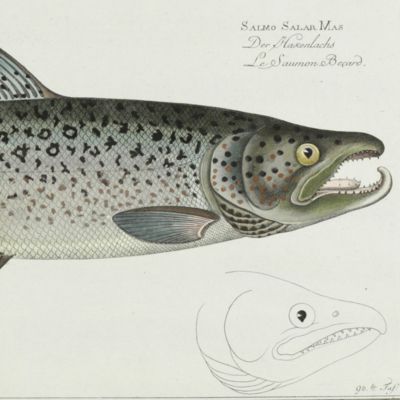
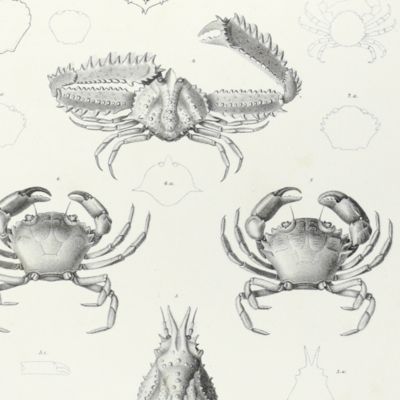
![image for Bijdragen tot de Dierkunde. Uitgegeven door het Koninklijk Zoologisch Genootschap Natura Artis Magistra. Eerste Deel. [= Issues 1-6].](https://schierenberg.nl/media/cache/product_thumb/78765/78765_x.jpg)
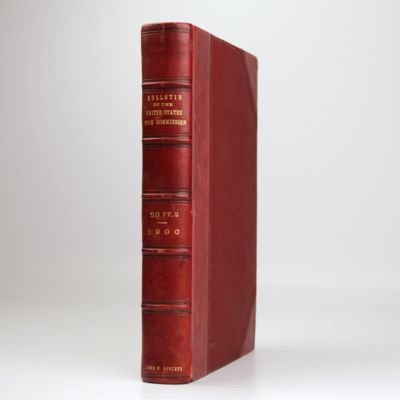
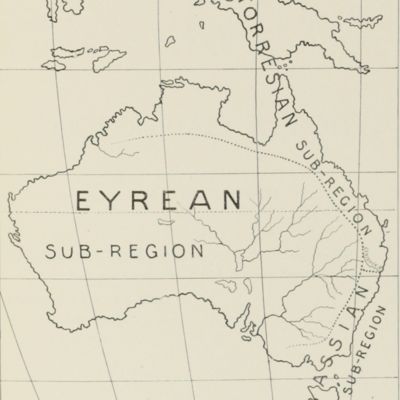
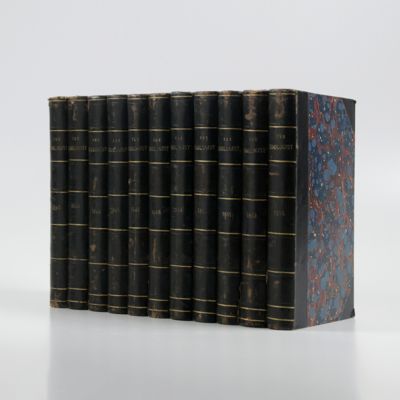
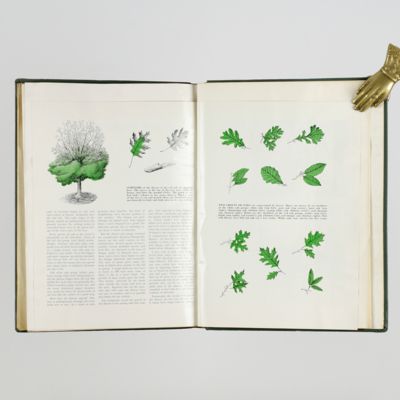
![image for A History of British Fishes. [Large paper copy].](https://schierenberg.nl/media/cache/product_thumb/47963/47963.jpg)
![image for Revision du nummulitique Égyptien. [AND] Nouvelle contribution à la paléontologie du nummulitique Égyptien. [AND] Étude complémentaire sur la paléontologie du nummulitique Égyptien. [Complete].](https://schierenberg.nl/media/cache/product_thumb/76656/76656_x.jpg)
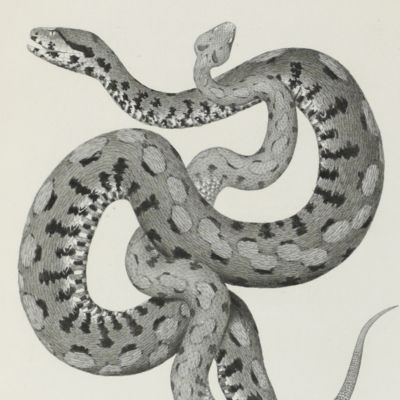
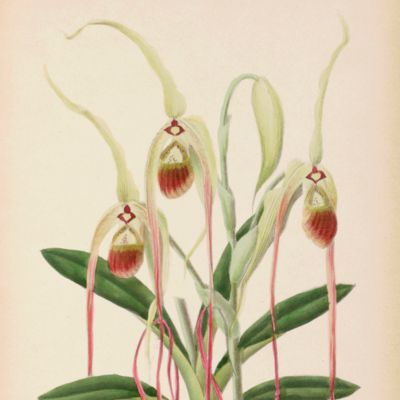
![image for Die Klassen und Ordnungen des Thier-Reichs wissenschaftlich dargestellt in Wort und Bild. Von Dr. H. G. Bronn, fortgezetzt von A Gerstaecker. Fünfter Band. Gliederfüssler (Arthropoda). Die Klassen und Ordnungen der Arthropoda ... Fünfter Band, erste Abtheilung. Crustacea (Erste Hälfe). [AND] Die Klassen und Ordnungen der Arthropoda ... Fünfter Band. II. Abtheilung. Crustacea (Zweite Hälfte: Malacostraca).](https://schierenberg.nl/media/cache/product_thumb/32251/32251_x.jpg)
![image for <em>Opuntia polyacantha [Pricklypear Cactus].</em>](https://schierenberg.nl/media/cache/product_thumb/70122/70122_x.jpg)
![image for Opuscula 1924-1950. [Works; collection of offprints]](https://schierenberg.nl/media/cache/product_thumb/68211/68211.jpg)
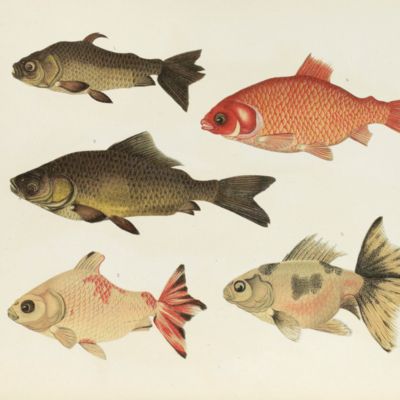
![image for Ueber den <em>Archegosaurus</em> der Steinkohlenformation [AND] Fische, Echinodermen und andere Versteinerungen aus dem Muschelkalk Oberschlesiens [AND] <em>Sphyraenodus</em> aus dem Tertiärsande von Flonheim.](https://schierenberg.nl/media/cache/product_thumb/64672/64672.jpg)
![image for Plantae Hochreutineranae. Etude systématique et biologique des collections faites par l'auteur au cours de son voyage aux Indes Néerlandaises et autour du monde pendant les années 1903 à 1905. Fascicule I - VI. [Complete; with additional typed index].](https://schierenberg.nl/media/cache/product_thumb/20477/20477.jpg)


